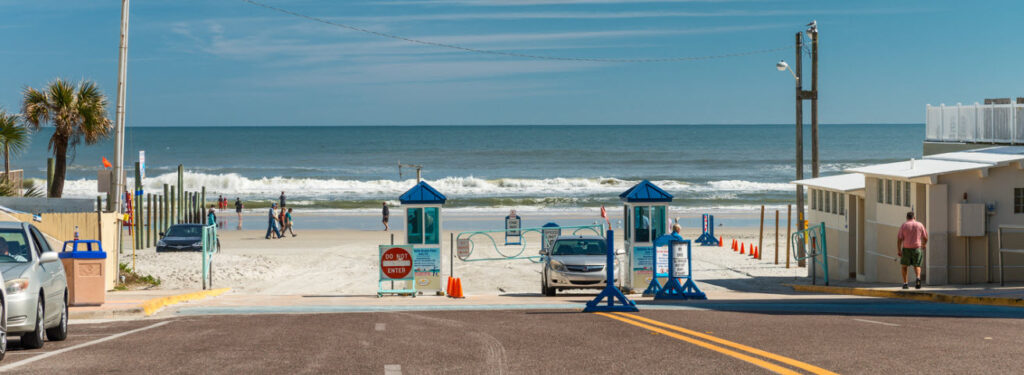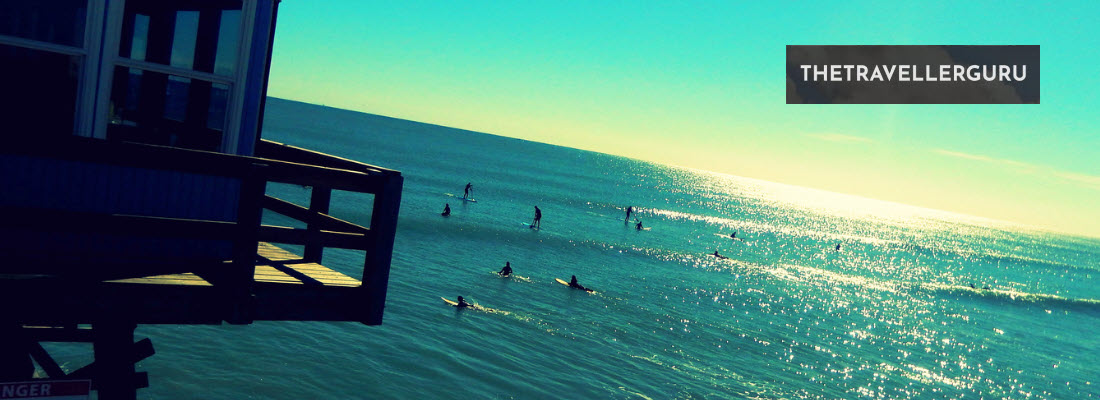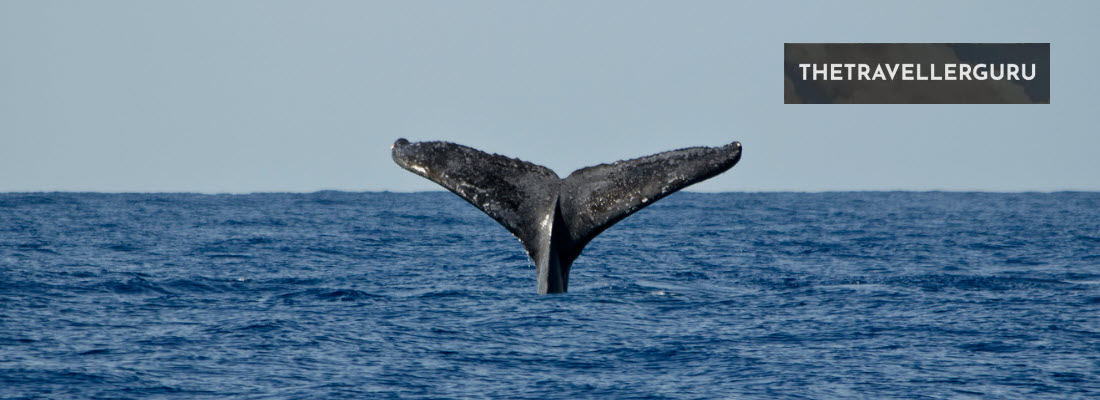Hey there my fellow travel enthusiasts and welcome to my post where we will check out my 10 best beaches in Florida for surfing this year. Florida’s East Coast is known for its consistent surf and warm waters, making it a popular destination for surfers of all levels and with over 1,300 miles of coastline, there are plenty surf spots to choose from.
The best surf in Florida is usually found during the fall, winter and early spring months when the water is cooler and the Atlantic is more active. During this time, the waves are bigger and more consistent, making it easier to catch a good ride. So grab your board and let’s go
- Cocoa Beach
- St. Augustine Beach
- New Smyrna Beach
- Jacksonville Beach
- Daytona Beach
- Flagler Beach
- Sebastian Inlet
- Jupiter Beach
- Palm Beach’s Reef Road
- Boynton Beach
Map of Florida’s Top Surf Beaches
Use this map to identify the location of the best surfing beaches in Florida as listed below:
Best Beaches in Florida for Surfing
Florida is home to some of the best surfing spots in the United States, with a wide range of waves for all levels of surfers. And as with many locations where there is a lot of coast line, there are plenty of spots to choose from, in fact waaaayyy too many to list here.
However, if you are looking for the best the Sunshine State has to offer, here are some good options to check out.
1. Cocoa Beach
Nestled along Florida’s picturesque coastline, Cocoa Beach stands as a premier destination for surf enthusiasts, celebrated for its exceptional surfing conditions and vibrant beach culture. As the proclaimed surfing capital of Florida, it beckons surfers of all skill levels with its consistent, beginner-friendly waves, offering an ideal setting for both learning and mastering the sport.
Details of the Surf Break at Cocoa Beach:
The heart of its surf scene is the iconic Ron Jon’s Surf Shop, the largest surf shop in the world, which anchors the local surf community and culture. The surf break at Cocoa Beach is characterized by several key features that make it appealing to a wide range of surfers.
- Wave Type and Consistency: Cocoa Beach is known for its consistent, manageable waves. The break here is primarily beach break, meaning the waves break over a sandy seabed which is generally more forgiving than reef or point breaks, making it ideal for beginners and intermediate surfers.
- Wave Size: The waves at Cocoa Beach are typically moderate in size, often ranging from 2 to 5 feet. This makes them accessible for less experienced surfers while still offering enough challenge for more advanced riders. The wave height can vary with weather conditions and seasons, with the potential for larger swells during stormier periods.
- Tides and Wind Conditions: The surf conditions at Cocoa Beach can be influenced by the tide, with some surfers preferring high tide for a deeper water experience, reducing the likelihood of touching the bottom. Wind conditions also play a role, with offshore winds (blowing from land to sea) generally creating more favorable and cleaner wave conditions.
In addition to Ron Jon’s Surf Shop, Cocoa Beach offers a variety of amenities for surfers, including other surf shops, surf schools for lessons and rental services for all the necessary gear.
All in all, Cocoa Beach is a relatively safe place to surf with lifeguards on duty at various points along the beach. However, as with any surfing location, it’s important for surfers to be aware of their abilities and local conditions, including any potential for rip currents.

2. St. Augustine Beach
St. Augustine Beach, nestled in the historic city of St. Augustine, is not only a place steeped in history but also a hidden gem for surf enthusiasts. This picturesque beach offers a unique blend of cultural heritage and vibrant surf culture, attracting surfers who appreciate both the waves and the rich historical backdrop.
Known for its varied wave conditions, St. Augustine Beach caters to surfers of different skill levels, from beginners to seasoned veterans. T
Details of the Surf Break at St. Augustine Beach:
- Wave Characteristics: St. Augustine Beach is known for its diverse wave conditions where the beach break produces a mix of swells that can range from small and gentle for beginners to larger and more challenging waves suited for experienced surfers.
- Wave Consistency and Size: The waves at St. Augustine Beach are relatively consistent, with the best conditions often found during the fall and winter months. Wave sizes can vary, offering a range of surfing experiences depending on the weather and ocean conditions.
- Tidal Influence: Like many surf spots, the conditions at St. Augustine Beach can be significantly influenced by the tide. Surfers often find that different stages of the tide can affect the wave shape and quality, with some preferring to surf during mid to high tide for optimal conditions.
- Wind Conditions: Offshore winds, coming from the land, tend to produce the most favorable surfing conditions at St. Augustine Beach, creating cleaner and more well-formed waves.
Safety is a priority at St. Augustine Beach, with lifeguard stations strategically placed for the protection of beachgoers and surfers. As always, surfers should remain vigilant about their own safety, especially regarding local conditions and potential rip currents.
Additionally, the area around St. Augustine Beach offers various amenities for surfers, including surf shops for gear and rentals, as well as surf schools for those looking to learn or improve their skills.
Check out these: Best Beaches in Florida for Families
3. New Smyrna Beach
New Smyrna Beach, with its stunning white sands and turquoise waters, is a jewel among Florida’s surf destinations. Located on the Atlantic coast, this beach is renowned for its beauty and exceptional surf conditions. It’s a place where the charm of a Gulf-typical beach meets the exhilarating Atlantic surf, creating a perfect blend for surfers and beach lovers alike. New Smyrna Beach is not just about picturesque views; it’s a haven for surfers seeking consistent and quality waves. The beach’s reputation extends beyond Florida, having been recognized as one of the best surf towns globally, making it a must-visit destination for surf enthusiasts.
Details of the Surf Break at New Smyrna Beach:
- Wave Quality and Consistency: New Smyrna Beach is celebrated for its remarkably consistent waves, making it one of the most reliable surf spots in Florida. The beach break here offers a variety of wave types, suitable for different surfing styles and levels.
- Wave Size: The waves at New Smyrna Beach typically range from small to medium size, ideal for both beginners and intermediate surfers. However, the beach can also produce larger swells, providing a challenge for more experienced surfers.
- Tidal Effects: The surf conditions at New Smyrna Beach can vary with the tides, with some surfers preferring different tide conditions for optimal wave shapes and sizes. It’s common for surfers to track tide charts to find the best times to surf.
- Wind Conditions: Offshore winds are generally favorable for surfing at New Smyrna Beach, as they tend to create cleaner and more well-formed waves. The beach’s orientation allows for good wind conditions on many days.
New Smyrna Beach stands out as a top-tier surfing destination, offering consistent waves and a beautiful setting. Lifeguards are on duty throughout and the area is well-equipped for surfers with numerous surf shops, board rental outlets and surf schools for those looking to learn or improve their surfing skills.

Book your surfing trip to Florida here!
4. Jacksonville Beach
Jacksonville Beach, located in northeastern Florida, is a prime destination for surfers seeking a blend of vibrant city life and excellent surf conditions. This beach, part of the larger Jacksonville area, offers a unique surfing experience with its expansive coastline and consistent swells.
Known for its lively atmosphere and beautiful, wide beaches, Jacksonville Beach attracts a diverse crowd of surfers from beginners enjoying the gentle summer waves to experienced riders challenging the larger swells of fall and winter.
Details of the Surf Break at Jacksonville Beach:
- Wave Diversity and Consistency: Jacksonville Beach is known for its consistent swell, providing surfers with reliable wave conditions. The beach break here offers a variety of waves that cater to different skill levels and surfing styles.
- Seasonal Wave Size: During the spring and summer months, the waves at Jacksonville Beach are generally smaller and more manageable, making it an ideal spot for beginners. In contrast, the fall and winter months often bring larger and more powerful swells, appealing to more experienced surfers.
- Tidal Influence: The surf conditions at Jacksonville Beach can be significantly affected by the tide. Surfers often find that the wave quality varies with different tide levels, with some preferring to surf at specific times in the tidal cycle for the best experience.
- Wind Conditions: As with many surf spots, offshore winds (blowing from land to sea) are typically preferred at Jacksonville Beach, as they help in forming cleaner and more well-defined waves.
All in all, Jacksonville Beach stands out as a dynamic surfing destination, offering varied wave conditions that cater to a wide range of surfing abilities. Its combination of accessible surf, a lively local scene, and comprehensive amenities makes it a favored spot for both local and visiting surfers alike.
5. Daytona Beach
Daytona Beach, renowned for its unique feature of allowing vehicles to drive on the beach, is also a celebrated destination for surfers. Situated on Florida’s east coast, this beach is famous not just for its racing heritage but also for its appealing surf conditions.
Daytona Beach offers a blend of exciting beach activities and a laid-back surfing atmosphere, making it a popular spot for both surf enthusiasts and beachgoers a;ike.
Details of the Surf Break at Daytona Beach:
- Wave Characteristics: Thanks to the presence of a sandbar that creates consistent wave breaks, Daytona Beach is characterized by its manageable waves that are typically not very high. Typically staying around 5 feet, they are ideal for beginner surfers or those looking for a more relaxed surfing experience.
- Wave Consistency: The surf at Daytona Beach is fairly consistent, with the sandbar providing regular breaks. This consistency makes it a reliable spot for surfers looking to catch some waves without the unpredictability found at some other beaches.
- Tidal Influence: The waves at Daytona Beach can be influenced by the tide, with varying conditions at different tide levels. Surfers often find that the waves can be more favorable at certain times of the tidal cycle.
- Wind Conditions: Offshore winds are generally preferred for better wave conditions at Daytona Beach, as they tend to produce cleaner and smoother waves.
Daytona Beach offers a unique surfing experience with its consistent, manageable waves and the convenience of beachfront driving. The area is well-monitored with lifeguard services, enhancing safety for all beachgoers.
Additionally, the area around Daytona Beach is well-equipped for surfers, with numerous shops offering gear, rentals, and surf lessons. The availability of these amenities makes it easy for beginners to get started and for experienced surfers to find what they need.

6. Flagler Beach
Flagler Beach, a serene and somewhat hidden gem along Florida’s east coast, offers a unique surfing experience away from the hustle and bustle of more crowded destinations. This charming beach town, nestled between St. Augustine and Daytona, is known for its unspoiled natural beauty and laid-back atmosphere, making it an ideal spot for surfers who prefer a more tranquil setting.
Flagler Beach’s uncrowded six-mile stretch of coastline is not only picturesque but also provides excellent conditions for surfing, especially during certain times of the year.
Details of the Surf Break at Flagler Beach:
- Wave Quality and Conditions: Flagler Beach is known for its good quality waves, which can be quite impressive during the right weather conditions. The beach break here offers a variety of waves that can cater to different surfing styles and levels of experience.
- Best Surfing Seasons: The optimal time for surfing at Flagler Beach is typically during cold fronts and the winter months. Surfers often find the best conditions from September through May, with the summer months being less consistent for surf.
- Tidal Influence: Like many surf spots, the conditions at Flagler Beach can vary with the tide. Surfers often track the tide charts to determine the best times to catch the ideal waves, as different tide levels can significantly affect wave formation.
- Wind Factors: Offshore winds are generally favorable for surfing at Flagler Beach, as they help create cleaner and more well-formed waves. The beach’s orientation allows for good wind conditions on many days.
While Flagler Beach offers a more secluded surfing experience and does have lifeguards on duty. However surfers should always prioritize safety and be aware of local conditions, including rip currents and marine life. The surrounding areas provide necessary amenities for surfers, including surf shops for equipment and rentals. The laid-back town also offers various dining and accommodation options, enhancing the overall surf trip experience as well.
7. Sebastian Inlet
Sebastian Inlet, part of the Sebastian Inlet State Park, is a magnet for surf enthusiasts seeking some of the most exciting surf conditions in Florida. Known for its impressive swells and famous surf spots like the “Monster Hole,” Sebastian Inlet is not just a surfing destination but a true surfer’s paradise, offering a unique blend of natural beauty and exhilarating wave action.
Details of the Surf Break at Sebastian Inlet:
- Wave Dynamics: Sebastian Inlet is famous for its powerful waves, which can reach significant heights of up to 10 feet. The inlet’s unique geographical features, including a manmade sandbar, contribute to creating these substantial wave breaks.
- Notable Surf Spots: One of the most famous spots at Sebastian Inlet is the “Monster Hole,” located on the south side of the inlet. This spot is known for its larger waves and is a favorite among more experienced surfers. The north side of the inlet also offers great surfing conditions but with slightly gentler waves.
- Tidal Influence: The surf conditions at Sebastian Inlet can vary with the tide, affecting both the size and quality of the waves. Surfers often prefer certain tide conditions, with many opting for low to mid-tide for the best experience.
- Wind Conditions: Offshore winds are ideal at Sebastian Inlet, as they help in forming cleaner, more well-defined waves. The inlet’s orientation allows it to capture these favorable wind conditions frequently.
Sebastian Inlet stands out as a premier surfing destination in Florida, offering some of the most exhilarating and challenging waves in the state. Its combination of unique geographical features, consistent surf conditions, and comprehensive amenities makes it a must-visit location for serious surfers and those looking to experience the thrill of Florida’s dynamic waves.
And finally, the surrounding area of Sebastian Inlet provides ample amenities for surfers, including surf shops for gear and rentals and the state park itself offers facilities such as parking, restrooms and showers, making it convenient for day-long surf trips too.

Book your surfing trip to Florida here!
8. Jupiter Beach
Jupiter Beach, known predominately for its excusive golf courses, is also a delightful surfing destination with friendly waves and laid-back atmosphere. This beach, often celebrated for its natural beauty and tranquil environment, offers a unique surfing experience that combines the thrill of the sport with the serenity of its surroundings.
Jupiter Beach is particularly appealing to those who enjoy a more relaxed surfing session, with its long, rolling waves and picturesque setting.
Details of the Surf Break at Jupiter Beach:
- Wave Characteristics: Jupiter Beach is characterized by its long, consistent waves, which are ideal for a smooth surfing experience. The waves here are typically not too aggressive, making them suitable for surfers of all levels, including beginners.
- Sandbars and Breaks: The presence of sandbars between Jupiter Inlet and Juno Beach Pier contributes to the formation of these friendly waves. These natural features create breaks that are enjoyable and relatively safe for surfers.
- Tidal Influence: As with many coastal surf spots, the conditions at Jupiter Beach can be influenced by the tide. The changing tide levels can affect the wave shapes and sizes, offering different surfing experiences throughout the day.
- Wind Conditions: Favorable wind conditions, particularly offshore winds, enhance the surfing experience at Jupiter Beach by creating cleaner and more well-formed waves.
Jupiter Beach offers a serene and enjoyable surfing experience, perfect for those who appreciate a more relaxed approach to the sport. Its combination of friendly waves, natural beauty, and comprehensive amenities makes it an ideal destination for surfers seeking both leisure and adventure in their surfing pursuits.
Palm Beach, specifically the area known as Reef Road, is a distinguished surfing location in Florida, renowned for its impressive and powerful waves. This spot, situated in the upscale region of Palm Beach, is a magnet for experienced surfers seeking some of the most challenging and exhilarating surf conditions in the state. Known for its large swells and clear waters, Reef Road at Palm Beach offers a unique and intense surfing experience against the backdrop of one of Florida’s most luxurious locales.
Details of the Surf Break at Palm Beach (Reef Road):
- Wave Size and Power: Palm Beach’s Reef Road is famous for having some of the biggest waves in Florida, with swells that can reach up to 15 feet. These powerful waves are a major draw for advanced surfers looking for a thrilling ride.
- Wave Formation: The waves at Reef Road are formed over a reef, which contributes to their size and strength. This type of break can produce more challenging surfing conditions compared to a typical beach break.
- Best Surfing Conditions: The biggest and most impressive waves at Reef Road usually occur during the winter and hurricane seasons. However, surfers are advised to exercise caution and avoid surfing during actual hurricanes.
- Tidal Influence: The surf conditions at Reef Road can vary with the tide, affecting both the size and shape of the waves. Surfers often track tidal movements to find the most favorable conditions.
- Wind Factors: Offshore winds are preferred at Reef Road, as they help in forming cleaner, more well-defined waves. These conditions are more common during the winter months.
- Crowd Levels: Given the challenging nature of the waves at Reef Road, the spot tends to attract a more experienced group of surfers. While it can get crowded, the level of surfing expertise required tends to limit the number of surfers in the water.
- Water Temperature: The water temperature at Palm Beach is generally warm, particularly in the summer. In the winter, when the biggest waves occur, cooler temperatures may necessitate the use of wetsuits.
- Safety Considerations: Due to the size and power of the waves at Reef Road, safety is a paramount concern. Surfers should be experienced and comfortable with large, powerful surf. Local knowledge and understanding of the reef and wave patterns are crucial.
- Surfing Amenities: Palm Beach offers various amenities for surfers, including surf shops and other facilities. The upscale nature of the area also provides a range of high-end dining and accommodation options.
9. Palm Beach’s Reef Road
Palm Beach, specifically the area known as Reef Road, is a distinguished surfing location in Florida renowned for its impressive and powerful waves. This spot, situated in the upscale region of Palm Beach, is a magnet for experienced surfers seeking some of the most challenging and exhilarating surf conditions in the state.
Known for its large swells and clear waters, Reef Road at Palm Beach offers a unique and intense surfing experience against the backdrop of one of Florida’s most luxurious locales.
Details of the Surf Break at Palm Beach (Reef Road):
- Wave Size and Power: Palm Beach’s Reef Road is famous for having some of the biggest waves in Florida, with swells that can reach up to 15 feet. These powerful waves are a major draw for advanced surfers looking for a thrilling ride.
- Wave Formation: The waves at Reef Road are formed over a reef, which contributes to their size and strength. This type of break can produce more challenging surfing conditions compared to a typical beach break.
- Best Surfing Conditions: The biggest and most impressive waves at Reef Road usually occur during the winter and hurricane seasons. However, surfers are advised to exercise caution and avoid surfing during actual hurricanes.
- Tidal Influence: The surf conditions at Reef Road can vary with the tide, affecting both the size and shape of the waves. Surfers often track tidal movements to find the most favorable conditions.
- Wind Factors: Offshore winds are preferred at Reef Road, as they help in forming cleaner, more well-defined waves. These conditions are more common during the winter months.
Due to the size and power of the waves at Reef Road, safety is a paramount concern. Surfers should be experienced and comfortable with large, powerful surf. Local knowledge and understanding of the reef and wave patterns are crucial as well. That said, Palm Beach’s Reef Road is a premier destination for skilled surfers seeking some of the most formidable waves in Florida.

10. Boynton Beach
Boynton Beach, located along Florida’s southeastern coast, offers a serene and inviting surfing experience. Distinguished by its less crowded beaches and consistent waves, this beach is a favored spot for surfers who prefer a more relaxed and laid-back surfing environment, away from the more bustling surf scenes found in other parts of Florida.
Boynton Beach’s natural beauty and accessible surf conditions make it an ideal destination for both novice and experienced surfers seeking quality waves without the crowds.
Details of the Surf Break at Boynton Beach:
- Wave Characteristics: Boynton Beach is known for its long, steady waves that provide surfers with ample opportunity for a satisfying ride. The waves here are generally not too aggressive, making them suitable for a variety of skill levels.
- Reef and Beach Breaks: The surf at Boynton Beach is influenced by both an exposed beach break and a reef break, contributing to the consistency and quality of the surfing conditions. This combination offers a diverse surfing experience, catering to different preferences and styles.
- Tidal Influence: The surf conditions at Boynton Beach can vary with the tide, with different tide levels affecting the wave shapes and sizes. Surfers often find that certain times of the tidal cycle offer the best surfing conditions.
- Wind Conditions: Favorable wind conditions, particularly offshore winds, are ideal for surfing at Boynton Beach, as they tend to produce cleaner and more well-formed waves.
All in all, Boynton Beach presents a tranquil and enjoyable surfing destination, perfect for those who appreciate a more relaxed approach to the sport. Its combination of consistent waves, natural beauty and comprehensive amenities makes it an ideal spot for surfers seeking both leisure and quality surf in a less crowded setting.
Frequently Asked Questions
FAQs
What is the best time of year to surf in Florida?
Florida’s surfing season runs year-round, but the best time to surf depends on what you’re looking for. In general, the fall and winter months (September to February) tend to have bigger waves, while the spring and summer months (March to August) have smaller waves and warmer water temperatures. Keep in mind that hurricane season, which runs from June to November, can bring some of the best waves of the year.
Where can I find beginner-friendly surf spots in Florida?
If you’re new to surfing, there are plenty of spots in Florida where you can learn. Cocoa Beach is a popular destination for beginners, thanks to its consistent waves and surf schools. Other beginner-friendly spots include New Smyrna Beach, St. Augustine Beach, and Deerfield Beach.
Conclusion
There you have it, my 10 best beaches in Florida for surfing. I hope it has been helpful and as usual, please let me know of your experiences here or if there are any other must visit locations that I need to add – which based on the sheer amount of trails in Florida, there should be a few – haha.
Also, please do not hesitate to comment below if you have any questions, concerns, or corrections or would like me to check anything else out for you.
Until next time.
Have fun
Paul






